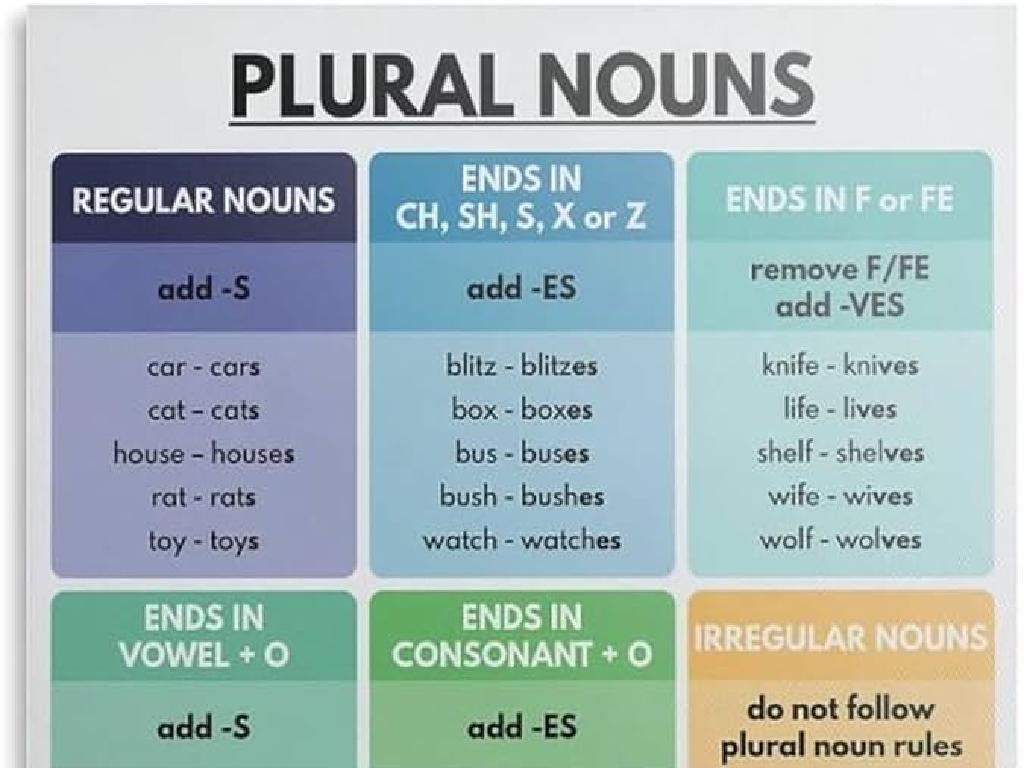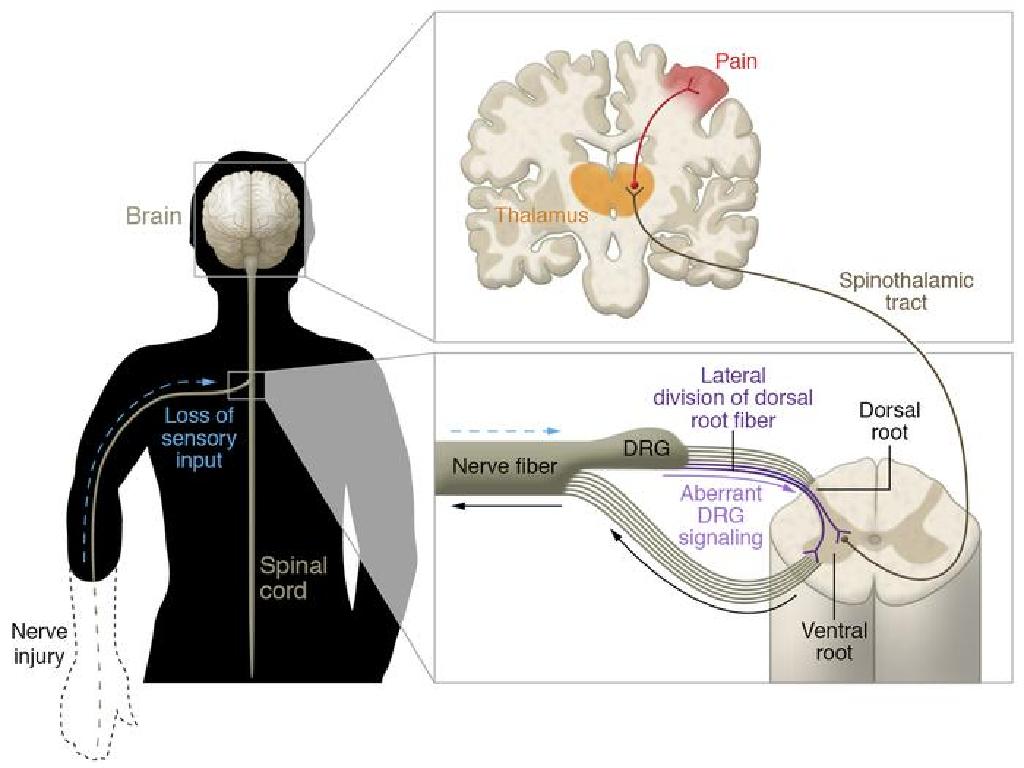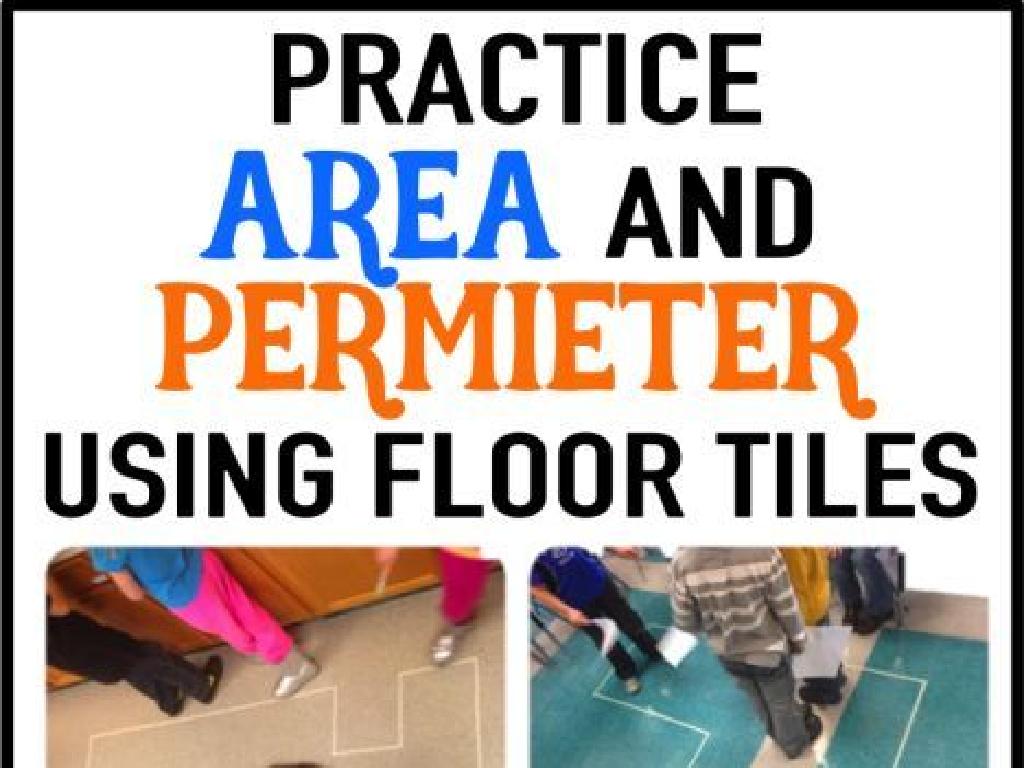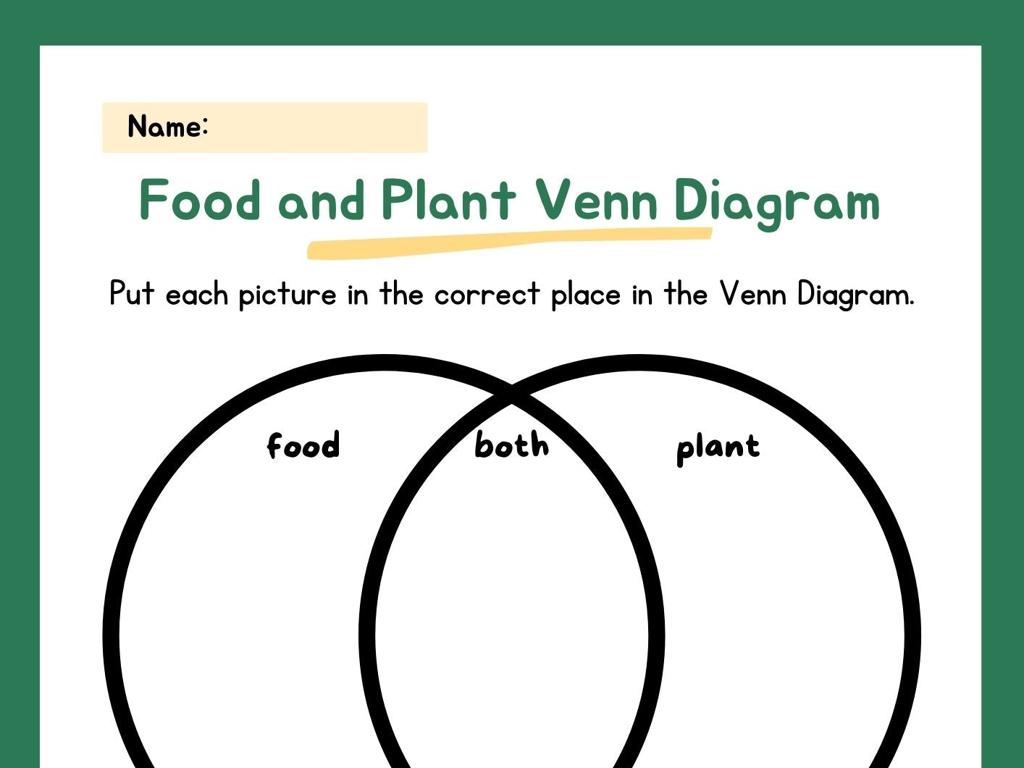Classify Elementary Substances And Compounds Using Chemical Formulas
Subject: Science
Grade: Sixth grade
Topic: Atoms And Molecules
Please LOG IN to download the presentation. Access is available to registered users only.
View More Content
Atoms and Molecules: The Tiny Building Blocks
– Atoms: The basic units
– Atoms are the smallest particles of elements, like hydrogen (H).
– Molecules: Atoms join together
– Molecules are groups of atoms bonded together, like water (H2O).
– Chemical formulas represent substances
– H2O, CO2 show the elements and number of atoms.
– Classifying substances and compounds
– Learn to distinguish between elements (Na) and compounds (NaCl).
|
This slide introduces the fundamental concepts of atoms and molecules, which are the core building blocks of all matter. Atoms are the smallest units of chemical elements that retain the properties of the element, while molecules are formed when two or more atoms bond together. Chemical formulas, such as H2O for water, use symbols to represent the elements and numbers to show how many atoms of each element are present. Understanding these basics will help students classify substances and compounds, a key skill in chemistry. Encourage students to look at the periodic table and familiarize themselves with the symbols of common elements. Provide examples of simple compounds and their chemical formulas to illustrate the concept.
Exploring Elements
– Define an element
– Simplest form of matter, cannot be broken down
– Common examples of elements
– Oxygen (O), Hydrogen (H), Carbon (C)
– Discover the Periodic Table
– A chart organizing all known elements
– Elements’ role in compounds
|
This slide introduces the concept of elements as the building blocks of matter. An element is a substance that cannot be broken down into simpler substances by chemical means. Provide familiar examples like oxygen and hydrogen to help students relate to the topic. Introduce the Periodic Table as a tool for classifying elements and understanding their properties. Explain how elements combine to form compounds, setting the stage for understanding chemical formulas. Encourage students to explore the Periodic Table and start recognizing elements by their symbols.
Understanding Compounds
– Define a compound
– A substance formed when two or more elements chemically join.
– Compounds vs. Elements
– Elements are pure substances; compounds are made of elements combined in fixed ratios.
– Examples of compounds
– Water (H2O), Carbon Dioxide (CO2), and Salt (NaCl) are all compounds.
– Chemical formula representation
– Compounds are represented by chemical formulas showing the elements and their proportions.
|
Begin with the definition of a compound, emphasizing that it’s a substance made from two or more elements that are chemically bonded. Contrast compounds with elements by explaining that elements are pure substances that cannot be broken down into simpler substances, while compounds can be. Provide familiar examples like water, carbon dioxide, and salt to help students relate to the concept. Explain that chemical formulas are a way of representing compounds, showing which elements are present and in what proportion. This slide sets the foundation for understanding chemical reactions and the formation of compounds.
Chemical Formulas Basics
– Symbols represent elements
– Each chemical element has a unique symbol, like H for Hydrogen.
– Numbers show element amounts
– Subscripts tell how many atoms, e.g., 2 in H2O means two Hydrogen atoms.
– Reading formulas: H2O, CO2
– Understand what each part of a formula means, like O2 for Oxygen gas.
– Writing formulas: practice
– Combine symbols and numbers to show compound composition.
|
This slide introduces the basic concepts of chemical formulas to sixth-grade students. Start by explaining that chemical symbols are shorthand for elements, and numbers indicate how many atoms of each element are present. Show how to read chemical formulas by breaking down common examples like water (H2O) and carbon dioxide (CO2). Then, guide students through writing simple chemical formulas by combining symbols and numbers, reinforcing the idea that these formulas represent the recipe of a compound. Encourage students to practice with real-life examples and provide worksheets for hands-on learning.
Classifying Substances: Elements vs. Compounds
– Elements: Pure substances
– Simplest form of matter, cannot be broken down, e.g., O (oxygen)
– Compounds: Two or more elements
– Chemical combination, e.g., H2O (water)
– Deciphering chemical formulas
– Symbols represent elements, numbers show proportions
– Practice with examples
– Classify H2, O2, CO2, and NaCl as practice
|
This slide introduces the concept of classifying substances into elements and compounds, which is fundamental in understanding chemical formulas. Elements are pure substances that cannot be broken down into simpler substances. Compounds are made up of two or more elements chemically combined in fixed ratios. Chemical formulas are used to represent these substances; the letters stand for the elements present, and the numbers indicate the ratio of atoms. Encourage students to practice classifying common substances like hydrogen (H2), oxygen (O2), carbon dioxide (CO2), and sodium chloride (NaCl) to reinforce their understanding of the topic.
Hands-On Activity: Identifying Substances
– Classify samples: Element or Compound
– Record your observations
– Use senses and tools to observe properties
– Note the chemical formulas
– Elements have symbols, compounds have formulas e.g., H2O, CO2
– Discuss findings with the class
|
This activity is designed to help students apply their knowledge of elements and compounds in a practical setting. Provide a variety of samples for students to examine. They should use their observational skills to determine whether each sample is an element or a compound. Encourage them to record the color, texture, and any other notable properties. Then, have them write down the chemical formula associated with the sample, if known. After the activity, facilitate a class discussion where students can compare their findings and reflect on the process. This will reinforce their understanding of chemical formulas and the classification of substances. Possible samples for the activity could include sulfur (element), table salt (compound – NaCl), water (compound – H2O), and copper (element).
Review and Q&A: Chemical Formulas
– Recap of substance classification
– Ask your questions now
What did you learn about elements and compounds?
– Let’s clarify any confusions
Any part of the lesson that was tricky, we can explain again!
– Review chemical formula examples
Look at H2O, CO2, and NaCl as examples of chemical formulas.
|
This slide is meant to consolidate the learning from today’s lesson on classifying elementary substances and compounds using chemical formulas. Begin with a brief recap, highlighting the key points such as the definition of elements and compounds, and how to read and write chemical formulas. Open the floor for students to ask any questions they might have, encouraging them to speak up about parts of the lesson they found challenging. Offer additional clarification on any points of confusion, possibly revisiting some of the chemical formulas discussed during the lesson, like water (H2O), carbon dioxide (CO2), and sodium chloride (NaCl). This interactive session will help ensure that students have a solid understanding of the topic and are prepared for future lessons.
Class Activity: Create Your Own Compound
– Craft compound models with clay
– Write your compound’s formula
– Use element symbols and numbers to show the ratio of atoms
– Present model and formula to class
– Discuss the composition of compounds
– Understand how elements combine to form compounds
|
In this hands-on activity, students will use modeling clay to create physical models of chemical compounds. Provide different colors of clay to represent different elements. Students should then write the chemical formula for their model, using element symbols and numbers to denote the ratio of atoms in the compound. After creating their models and writing the formulas, students will share their work with the class, explaining the elements present and the ratio of atoms. This activity will help students visualize the concept of compounds and how they are represented by chemical formulas. Possible variations of the activity could include creating models of simple molecules like water (H2O), carbon dioxide (CO2), or table salt (NaCl). Ensure that students understand the significance of subscripts in chemical formulas as they indicate the number of atoms of each element in a compound.






